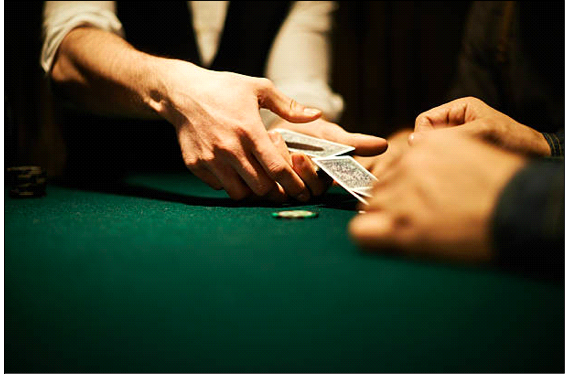If you’re tired of losing your chips in poker games, implementing effective strategies and gaining knowledge can take your game to the next level. In this article, we will share helpful techniques to improve your skills and win more at poker. From mastering the basics of betting to understanding pot odds, learning these tips will give you an edge over other players at the poker table. If you’re interested in improving your skills as a player and increasing your chances of winning, keep reading!
1. Play Poker Online
Before we discuss strategy, let’s clarify why online poker is preferable to live poker. One key advantage is the availability of low-stakes games, which allow you to play without significant financial risk. Additionally, many online poker sites offer free poker that you can play just for fun or even use to practice new strategies.
Online poker also offers the benefit of being available all day and night, enabling you to play at your convenience. Moreover, players will have access to a variety of tools and resources to enhance their skills and increase their chances of winning. These advantages demonstrate why online poker is an excellent choice for improving your gameplay and profits.
2. Master the Basics of Betting
To excel at poker, it’s crucial to have a good grasp of betting techniques. Always keep in mind that betting is usually a wiser choice than calling. By betting, you can manipulate the pot and set yourself up for higher earnings in the future. Furthermore, you should know when to make bold bets and when to exercise restraint while betting.
For example, if you have weaker cards, betting more will force your opponents out and increase your chances of winning. On the other hand, if you have a strong hand, betting smaller can entice opponents to call and help you win more money. Consider your hand strength and use betting strategically to maximize your winnings.
3. Utilize Bluffing Strategies Wisely
The first thing to keep in mind is that you’ll want to be in late position when bluffing so that you have a better idea of what your opponents are holding. Another important point is that you should only bluff when the pot isn’t too big. A large pot means you’ll have to bet more in order to give your opponents unfavorable pot odds and get them to fold, which can be risky. Also, you should bluff against opponents that are more likely to fold against a bet from a late position.
Additionally, if you want a safer alternative to bluffing, consider semi-bluffing. This involves betting with a hand that may not be the best but still has the potential to improve. If you bet and your opponents fold, you’ll take down the pot. But if someone calls, then you still have a chance to make a good hand on future streets and win.
4. Know When to Fold
One mistake that beginners often make is playing too many hands. If your hand isn’t strong enough to fight for the pot, you should fold and wait for a better opportunity. In the long run, the mistakes you avoid will compensate for any missed opportunities, so don’t worry about it too much.
To know when to fold, players need to learn to recognize good and bad starting hands. A good starting hand typically has big pairs, high suited cards, or high connectors. For example, Ace-King is usually a good hand to enter the pot with, as it has the potential to make a strong hand. On the other hand, low, unsuited, and disconnected cards are usually best folded pre-flop.
5. Be Aggressive
Aggressive poker players are often more successful than passive players. This is because being aggressive can help you gain control of the game and potentially win more pots. When playing aggressively, it’s important to choose your timing carefully; don’t make large bets just for the sake of being aggressive. Instead, consider your hand strength and try to read your opponents, then bet when you feel you have a reasonable chance of winning.
For example, if your hand is weak, the best thing to do is to fold and wait for a better one. On the other hand, if you think your opponent’s hand is about the same strength as yours, betting big will force them to either fold or call with unfavorable pot odds.
6. Exploit Your Table Image
The table image is the perception your opponents have of you based on how you play. If you’re a tight player, they’ll assume that when you enter the pot, you’ll have a strong hand. On the other hand, if you’re losing, they’ll be more likely to call your bets, even with weaker cards.
You can use this to your advantage by playing in a way that exploits your table image. For example, if your image is tight, you can play weaker hands aggressively for a few rounds. If your image is loose, start entering the pot with only strong hands to catch your opponents by surprise.
Wrap Up!
By understanding hand strength, using strategic betting, knowing when to fold, utilizing bluffing strategies wisely, and exploiting your table image, you can gain an edge over other players at the table. With practice and dedication to improving your skillset, soon enough, you’ll be ready to compete against the best of the best at GGPoker, the world’s largest poker room!































































